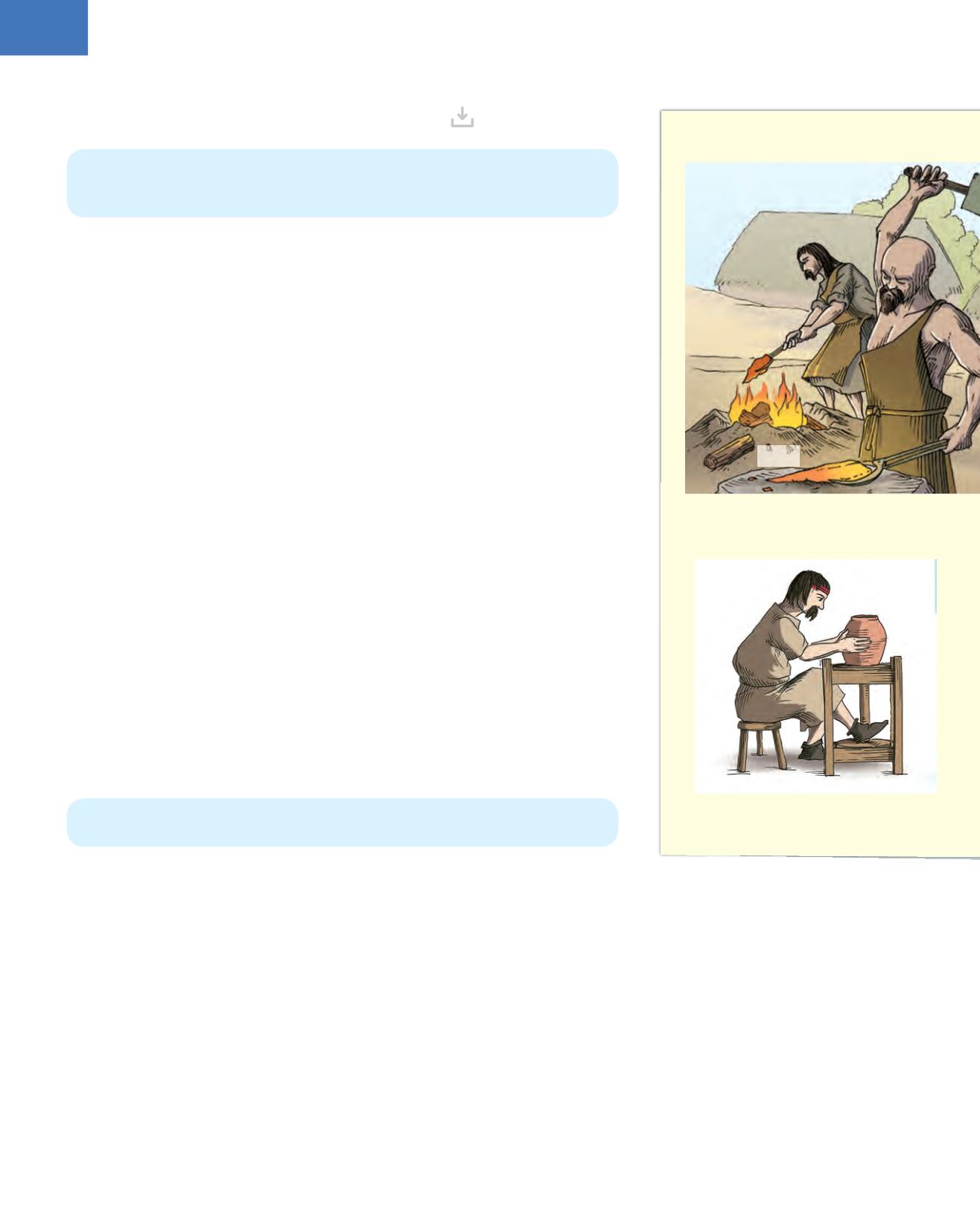
2
32
2. The Neolithic period and the Bronze and Iron Ages
3. THE BRONZE AND IRON AGES
The
Bronze and Iron Ages
began when
metallurgy
was discovered in the Near
East in around 4000 B.C., although during the Neolithic Period metal objects were
already being used.
Metallurgy is the technique that consists of heating metals to high temperatures in
order to shape them into objects (weapons, adornments and tools). This discovery was
probably made when people saw metals fall into a fire, melt and then harden when
they cooled.
The Bronze and Iron Ages is divided into three periods, which are defined by the type
of metal used:
❚
The Copper Age
: before 5000 B.C., copper began to be used on the Anatolian
Peninsula. Initially, objects were made by heating the metal and beating it into
the required shape. Later, the ore
2
was smelted
3
in an
oven
and poured into a
mould in the shape of the required object. Then the object was taken out and the
impurities were removed. As copper was not very strong, it was mainly used to
make decorative objects.
❚
The Bronze Age
: improvements in smelting techniques led to the creation of
an
alloy
or mixture of two metals, copper and tin, to make bronze. Bronze is
stronger than copper and was also used to make weapons. The oldest known
object made from bronze was discovered in Mesopotamia and dates from
around 3000 B.C.
❚
The Iron Age
: when the technique for smelting iron was discovered,
iron
working
began. Iron is stronger than bronze. The process for making iron was
not easy because it has to be heated to a temperature above 1000 ºC. This was
achieved for the first time on the Anatolian Peninsula around 1500 B.C. However,
the use of smelted iron did not become common until the 1st millennium B.C.
Many types of objects were made of iron, the most important one being swords,
which were much stronger than the bronze ones.
3.1. The economy in the Bronze and Iron Ages
The discovery of metallurgy led to important
developments
in
agriculture
and
trade
.
Metals were used to make stronger and more effective agricultural tools, like the
iron
plough
. When harvests were abundant,
surplus
products were exchanged
with the neighbouring village. This type of activity is called
trade
. Initially, this was
done by
bartering
. This means one product was exchanged for another without
using money.
Traders had to travel frequently in search of minerals. Eventually,
trade routes
were
established between distant places. This helped new knowledge, customs and religious
beliefs to spread rapidly while minerals, tools, weapons, agricultural products, cloths
and luxury articles (jewels) were exchanged.
Trade benefited from some of the inventions that were created at the beginning of
the Bronze and Iron Ages such as the potter’s wheel, the wheeled cart, sail boats and
maps drawn on clay tablets.
2
ore
:
a mineral that contains metal
3
smelt (
v
)
:
to melt ore to separate the
metal in it
The
potter’s wheel
allowed the clay
to be shaped quicker and with better
quality.
beat
heat


